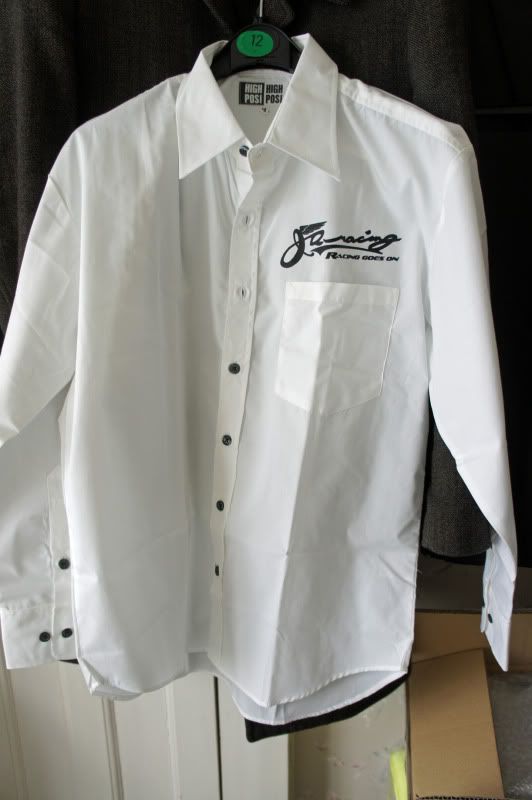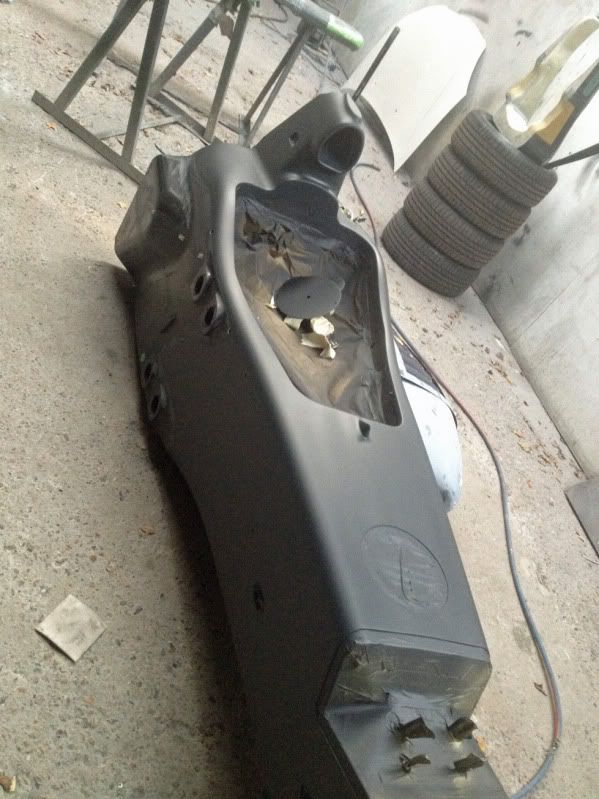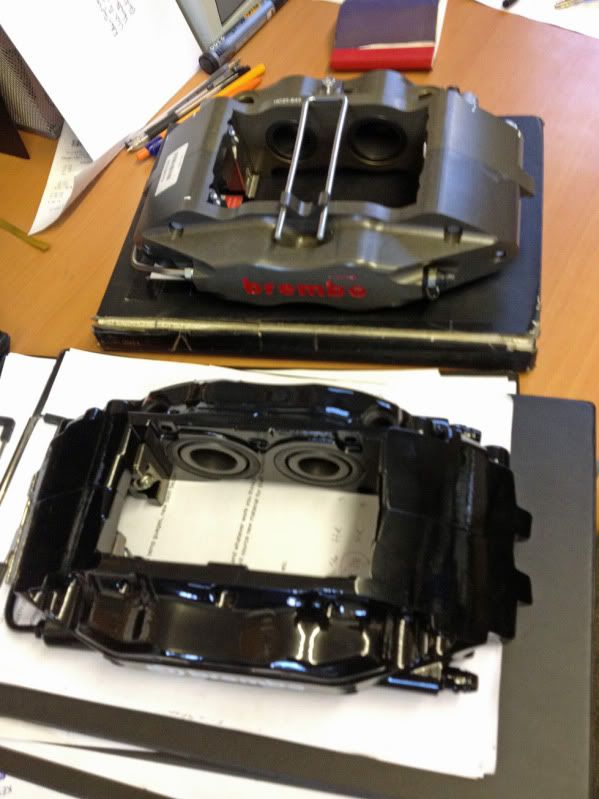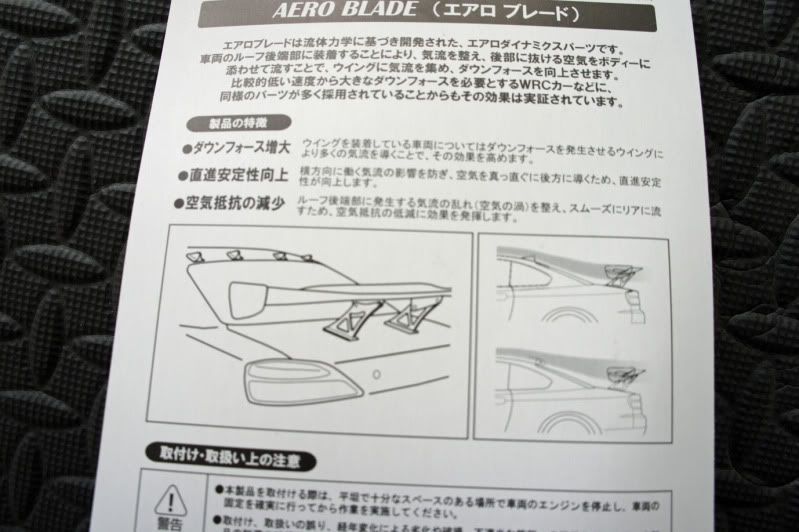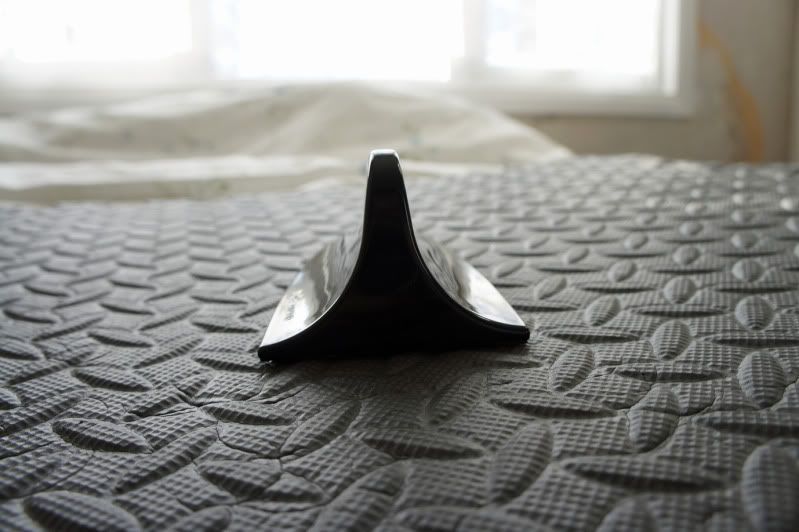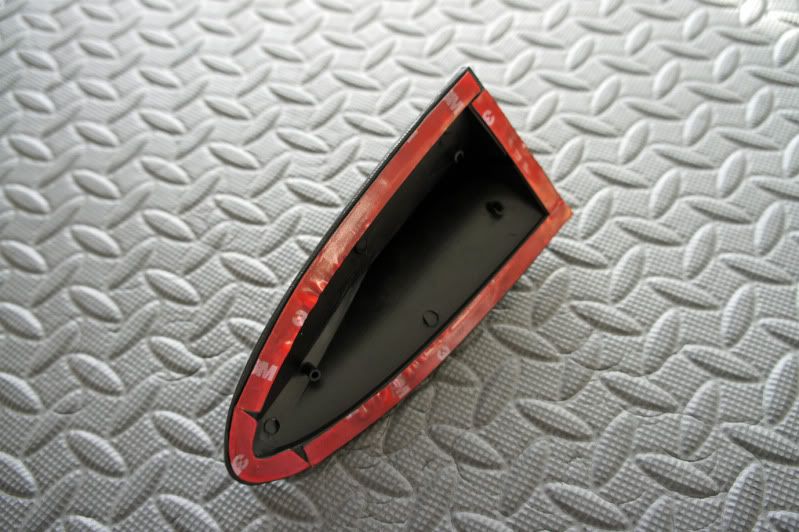Not a car update, but a fashion one (WTF?!! I hear you say). I justify this post as I will not have any car updates until 2012 :p
The very last medium sized J's Racing MME 2008 shirt for sale is now longer not for sale as it is in my possession :)
(J's auctioned them off for the Earthquake victims)
For those of you who do not know, MME is the Malaysia Merdeka Endurance race, formerly known as Merdeka Millennium Endurance Race. It's a 12hr endurance race held annually at the Sepang International Circuit in late August as part of the Merdeka festivities in Malaysia.
Back in 2008, J's Racing competed and won their class (Class A). This shirt is to commemorate their success.
As J's say... Racing goes on....
BUT. I couldn't not post something about my car.
Here's my car failing to get traction on a dyno - wheel spin anyone?
The sooner I get my new wheels on (with new tyres!) the better :)
Tuesday, 20 December 2011
Tuesday, 13 December 2011
GP2 Race Shell
Saw this in TGM's body shop over the weekend.
A GP2 Shell being prepped for next season.
A GP2 Shell being prepped for next season.
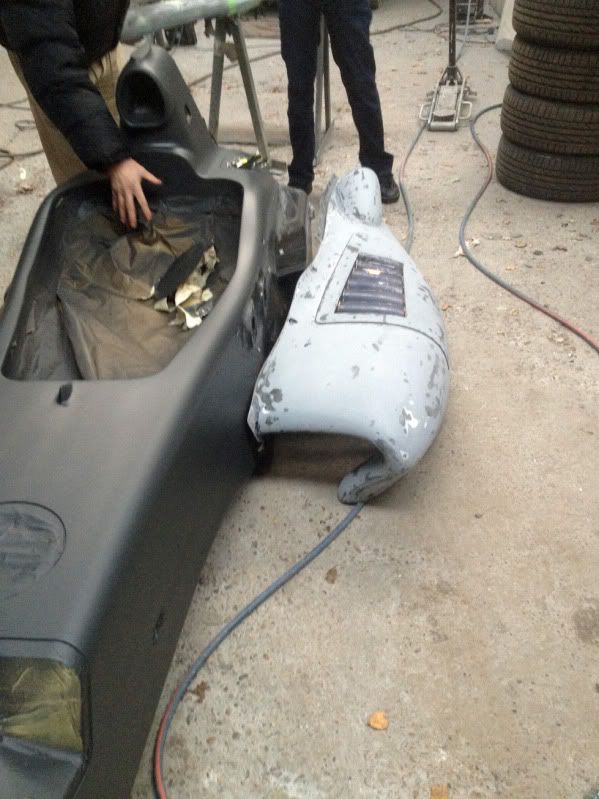 |
| Because of the material, paint stripper cannot be used so last season's paint has to be sanded down! |
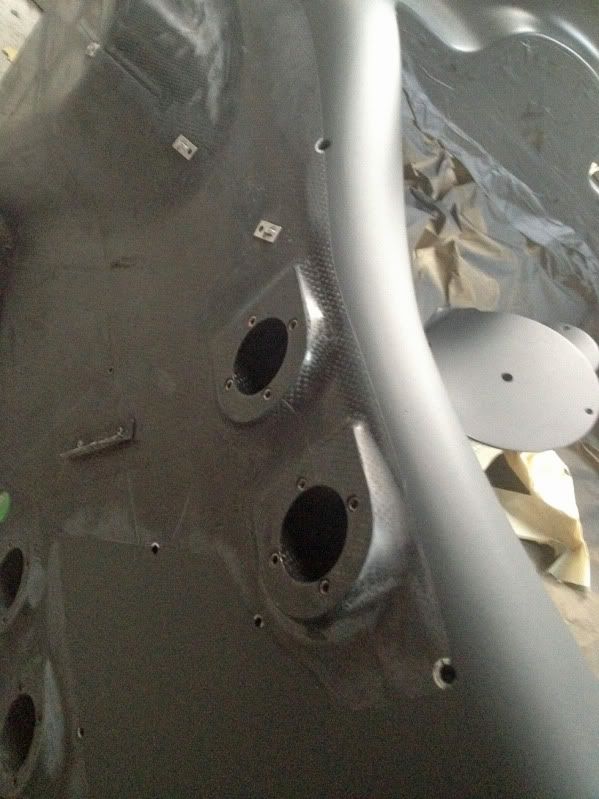 |
| To save weight, no paint is applied to areas of the shell where components meet |
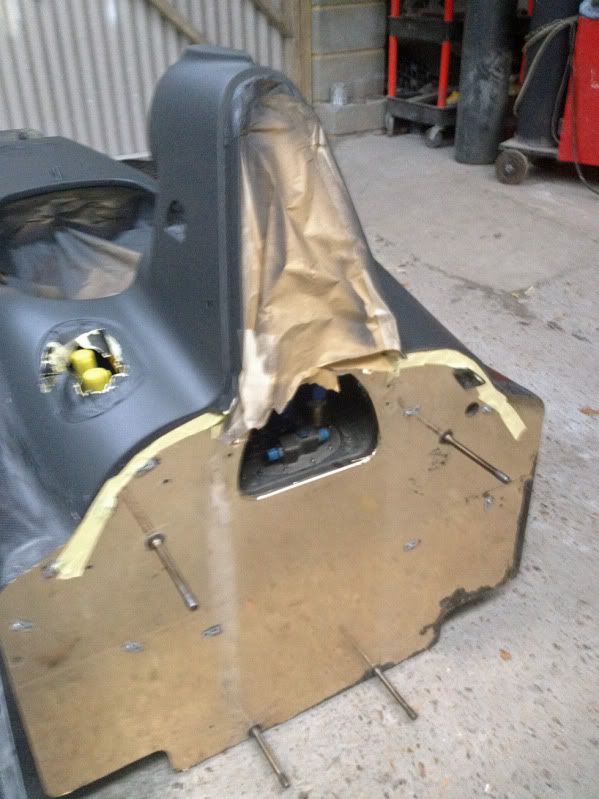 |
| Gold plating separates the driver from the fuel tank |
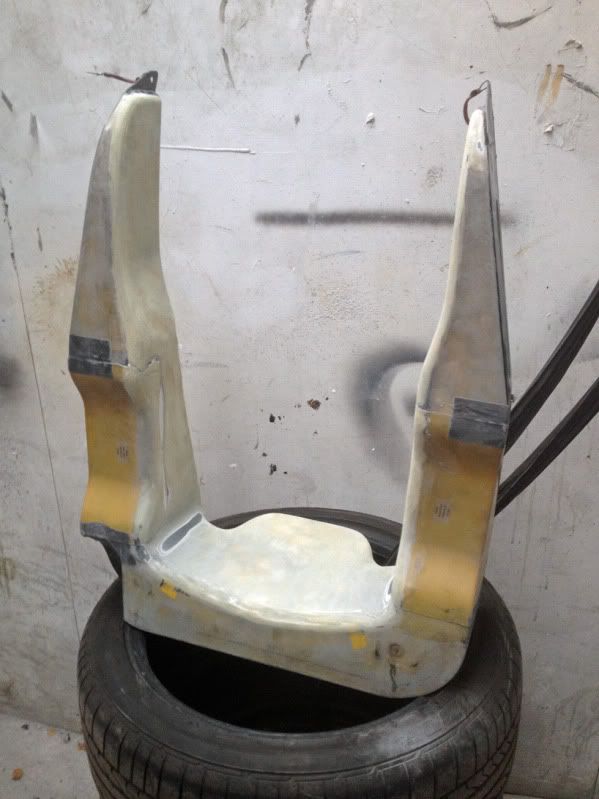 |
| Detatchable Cockpit Surround |
Saturday, 10 December 2011
Brembo Race Calipers
So a few weeks back you may recall that I was astounded with the brake set up on Joe's race car at Snetterton. So much so that I called Tom up the following Monday for a "chat".
I have shall we say gone a little overboard with my brake upgrade. After our chat, Tom had spoken with Brembo to build a pair of XA2.E7 Series 4 race calipers in replacement for my new and unfitted F50 calipers.
The 2 piece race disc setup will remain the same. Incidentally, the discs are the same as the below picture which I don't believe I have posted up before.
I was down at TGM today so took a look at the new kit. The F50's were still there so I was able to do a quick visual comparison.
The XA2.E7's as with all race calipers run without dust seals around the pistons as in brutal race applications where there is prolonged serious heavy braking, they would melt. This will mean that I'll have to keep on top of them and clean them out on a regular basis. Given my car is a weekend car at most (and only driven hard on track) this is no big issue.
Anyway, some tech specs of the XA2.E7 below (check out the piston size and pad thickness - absolutely immense!)
I am so looking forward to testing these out on track next season. I absolutely cannot wait!
I have shall we say gone a little overboard with my brake upgrade. After our chat, Tom had spoken with Brembo to build a pair of XA2.E7 Series 4 race calipers in replacement for my new and unfitted F50 calipers.
The 2 piece race disc setup will remain the same. Incidentally, the discs are the same as the below picture which I don't believe I have posted up before.
 |
| 332 x 32mm fully floating 2 piece race disc set up |
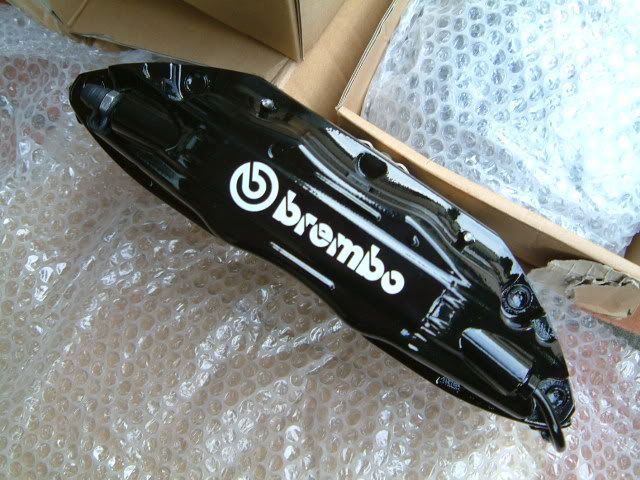 |
| F50 Caliper picture for reference |
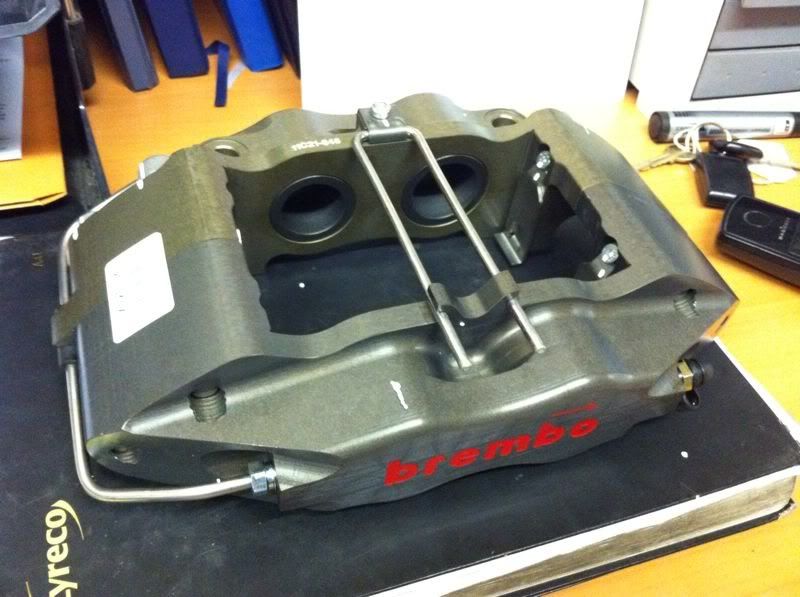 |
| XA2.E7 Race Caliper |
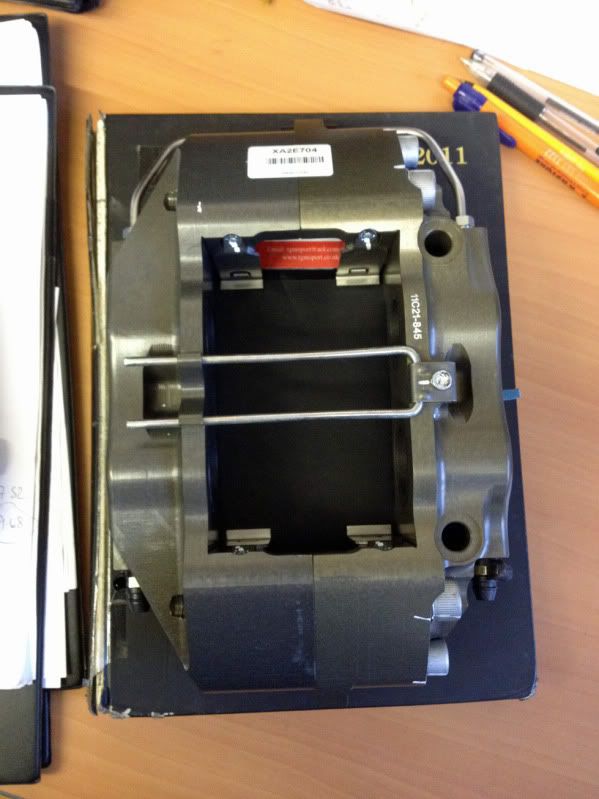 |
| Notice the quick release retainer. Pad changes should only take seconds :) |
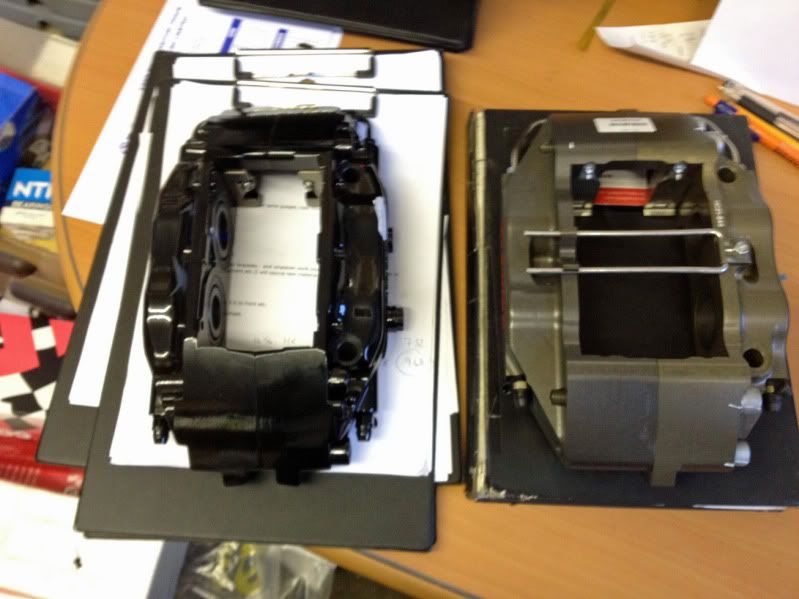 |
| Notice the size difference between the two calipers. And I thought the F50s were wide! |
Anyway, some tech specs of the XA2.E7 below (check out the piston size and pad thickness - absolutely immense!)
- 2 piece aluminium caliper body
- 2.95kg
- Piston size: 38mm, 42mm
- Piston area: 50.39cm2
- Pad area: 63cm2
- Pad thickness: 25 - 26.5mm
I am so looking forward to testing these out on track next season. I absolutely cannot wait!
Saturday, 3 December 2011
Sard Aero Blades
I have just taken delivery of a set of Sard aero blades a.k.a Vortex generators.
To explain in simple terms the benefit of vortex generators I have summarised a very good article from AutoSpeed
Airflow over a car’s surfaces can be divided into two simple types, laminar (attached) flow, and turbulent (separated) flow.
A car that is being dragged along by movement has a thin blanket of air that sits on the surface of the body. This blanket of air is called the boundary layer and varies in depth, normally getting thicker towards the rear of the car.
The thicker the boundary layer, the more easily airflow will separate from the body, leading to turbulent flow.
Flow separation is bad because it leads to a larger wake (the area of disturbed, turbulent air being dragged along behind the car) and less pressure on the rear surfaces (like sloping rear windows and spoilers), reducing pressure recovery, ie reducing the pressure of the air that can help push the car forwards
As mentioned, the further you get towards the back of the car, the harder it is to keep the flow sticking to the bodywork. Because of the increased thickness of the boundary layer, air more easily separates, resulting in a larger wake, less pressure recovery and poorer performance of rear mounted wings. In other words, the airflow close to the car has lost its flow energy.
If vortex generators are placed just ahead of the separation point, they can be used to put airspeed back into the boundary layer. The boundary layer then becomes energised and as a result, the airflow is more likely to stick to the body. The wake is reduced in size or increased in pressure, where the increased pressure acts on angled rear surfaces such as the rear wing thus giving more rear downforce.
More pictures below of the aero blade.
To explain in simple terms the benefit of vortex generators I have summarised a very good article from AutoSpeed
Airflow over a car’s surfaces can be divided into two simple types, laminar (attached) flow, and turbulent (separated) flow.
A car that is being dragged along by movement has a thin blanket of air that sits on the surface of the body. This blanket of air is called the boundary layer and varies in depth, normally getting thicker towards the rear of the car.
The thicker the boundary layer, the more easily airflow will separate from the body, leading to turbulent flow.
Flow separation is bad because it leads to a larger wake (the area of disturbed, turbulent air being dragged along behind the car) and less pressure on the rear surfaces (like sloping rear windows and spoilers), reducing pressure recovery, ie reducing the pressure of the air that can help push the car forwards
As mentioned, the further you get towards the back of the car, the harder it is to keep the flow sticking to the bodywork. Because of the increased thickness of the boundary layer, air more easily separates, resulting in a larger wake, less pressure recovery and poorer performance of rear mounted wings. In other words, the airflow close to the car has lost its flow energy.
If vortex generators are placed just ahead of the separation point, they can be used to put airspeed back into the boundary layer. The boundary layer then becomes energised and as a result, the airflow is more likely to stick to the body. The wake is reduced in size or increased in pressure, where the increased pressure acts on angled rear surfaces such as the rear wing thus giving more rear downforce.
More pictures below of the aero blade.
Subscribe to:
Posts (Atom)

